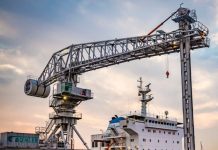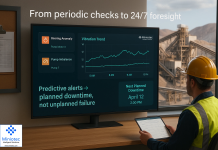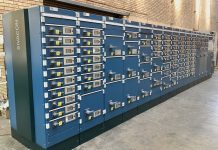Mining operations, whether above ground or deep beneath the surface, operate in some of the harshest, most hazardous conditions in the industrial sector. The combination of combustible materials, high-performance machinery and volatile environments creates an ever-present risk of fire. When disaster strikes in a mining environment, the consequences can be catastrophic, ranging from equipment loss and production downtime to severe injury or loss of life.
“Mining vehicles such as excavators, haul trucks and draglines are high-value assets operating in arduous conditions where fire risk is high,” explains ASP Fire CEO Michael van Niekerk. “These machines are not only exposed to extreme temperatures, friction and flammable substances. They also often operate in remote areas, where emergency response times can be significantly delayed. This makes prevention absolutely critical.”
The Hidden Dangers of Mining Fires
The risk of fire in mining extends beyond the surface. Underground operations, in particular, pose a unique threat profile due to confined spaces, limited ventilation, and the challenge of quick evacuation. According to the International Council on Mining and Metals (ICMM), underground fires are among the most deadly types of incidents in the mining sector, and early suppression is essential to prevent escalation.
In both surface and underground operations, mining vehicles are vulnerable to ignition sources, including:
- Overheating brake systems and turbochargers
- High-pressure hydraulic leaks
- Electrical faults and arcing
- Fuel and oil line ruptures
Left unchecked, these conditions can quickly spark fires in combustible materials like diesel fuel, rubber tyres and lubricants. Equipment fires therefore pose the risk of being one of the leading causes of asset loss and operational disruption in mining.
Tailored Protection Through Risk Assessment
To mitigate these risks, a thorough Hazard Identification and Risk Assessment (HIRA) is essential. ASP Fire offers detailed assessments tailored to the specific operational environments of each vehicle or equipment type. These evaluations ensure that the fire prevention system is not just effective in theory but optimized for the actual conditions in which the equipment is used.
This includes the development of fire protection systems that take into account not only the heat sources and combustible materials present, but also the physical environment, such as dust levels, ambient temperatures, vibration and operator accessibility.
Smarter, Safer Suppression Solutions
While Dry Chemical Powder (DCP) extinguishers remain a common solution in mining, they present limitations. DCP lacks cooling properties, which can lead to reignition, especially in rubber or fuel fires.
Powder can compact from vibration, increasing the risk of failure when deployed. Visibility is impaired in enclosed or underground spaces, complicating evacuation and suppression efforts. In response, ASP Fire promotes the use of advanced water-mist and Aqueous Film Forming Foam (AFFF) systems for mining operations.
Water-mist extinguishers atomise water into micro-droplets, increasing surface area for rapid heat absorption. These extinguishers cool hot surfaces and suppress flames effectively without the thermal shock or operational hazards associated with powders.
AFFF systems create a vapour-suppressing blanket that starves fuel fires of oxygen and prevents re-ignition, ideal for hydrocarbon-based fires common in fuel transport and storage areas. These systems are not only safer for operators but also environmentally responsible, reducing ecological damage and toxic exposure in sensitive environments.
Fire Safety Is Production Safety
The ripple effect of a fire in a mining operation is immense. From halted production and equipment downtime to reputational damage and increased insurance premiums, the financial stakes are high. More importantly, miners working on the frontlines deserve assurance that their safety is a priority.
ASP Fire’s approach ensures that mining operations are not merely reactive to incidents but proactive in their prevention strategies. Its expert fire engineers design and implement systems that meet international best practices while accounting for local realities, whether in a deep-level gold mine or an open-pit coal site.
“Fire safety in mining is not a luxury, it is a necessity,” comments van Niekerk. ASP Fire offers comprehensive fire and life safety risk assessments for surface and underground mining operations, enabling them to implement best-in-class fire suppression systems tailored to your site.







